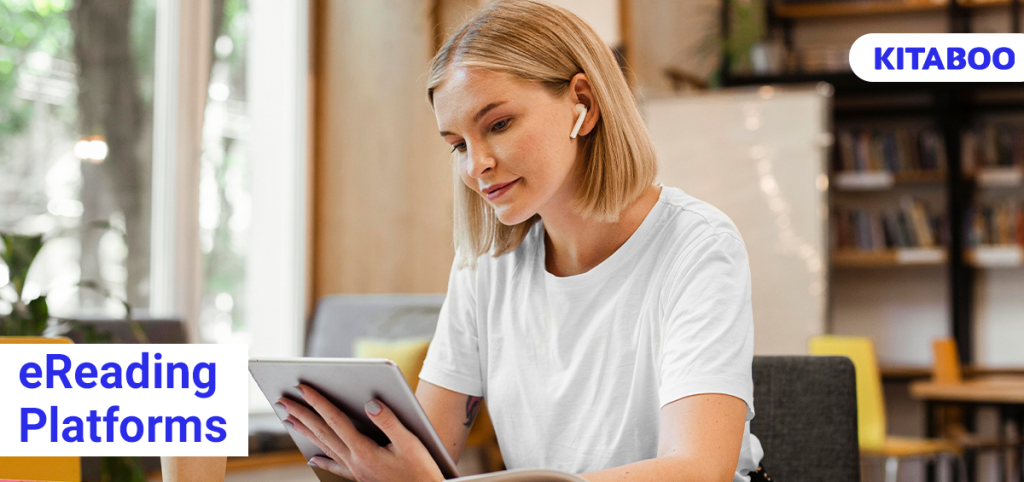
Unlocking the Power of eReading Platforms for K12 Students: Exploring Features, Benefits, and Best Practices
Summarize this blog with your favorite AI:
eReading platforms have revolutionized the way we consume written content. With advancements in technology, accessing books, magazines, articles, and other written materials has become more convenient and versatile than ever before. In this article, we’ll explore the key features, benefits, challenges, and best practices of eReading platforms for K12 students. Here’s what we’ll cover.
Table of Contents:
Why Consider eReading Platforms for K12 Students?
eReading platforms offer a plethora of features that enhance the digital reading experience. These platforms prioritize accessibility and ease of use, ensuring that students can seamlessly navigate through digital content.
Customization options allow learners to personalize their reading experience. From adjusting font size and style to choosing color schemes, these platforms provide a level of flexibility that makes reading and studying more comfortable. Moreover, many eReading platforms offer social and collaborative features that enable students to share recommendations, join reading communities, and engage in discussions with their peers.
Progress tracking and note-taking functionalities are another important aspect of eReading platforms. Students can bookmark pages, highlight passages, and add annotations, making it easier to revisit important information. These features aid in comprehension and information retention. Let’s explore what the other benefits of eReading platforms are.
Benefits of eReading Platforms in K12 Education
The benefits of using eReading platforms in K12 education are numerous. First and foremost, they offer unparalleled convenience and portability. With a smartphone, tablet, or eReader, students can access entire digital libraries anytime, anywhere. No longer limited by the weight or space constraints of physical books, students can effortlessly carry all their study material easily with them.
Cost-effectiveness is another advantage of eReading platforms. While purchasing physical books can be expensive, eBooks are often more affordable, and some platforms even offer subscription services or access to free digital content. This makes study materials more accessible to the general public.
With interactive features, eReading platforms also enhance the learning experience. Some platforms incorporate multimedia elements like audio narration, videos, and animations, creating a more immersive experience. Interactive learning features, such as built-in dictionaries and language translation tools, promote vocabulary expansion and language acquisition.
Challenges of eReading Platforms in K12 Education
While eReading platforms can be a boon for K12 education, they also have a few downsides. Device compatibility is a key consideration, as not all platforms support every device or operating system. This makes it difficult to cater to students who use different or multiple devices. Educators need to ensure that every student has access to the same device and platform.
Internet connectivity is another potential challenge. Although many eReading platforms offer offline reading options, certain features like syncing progress across multiple devices or accessing online communities require an internet connection. Students in areas with limited connectivity may face limitations in utilizing these features fully.
Digital rights management (DRM) is a topic of concern for some K12 students. DRM protects the rights of the K12 content creators and publishers by imposing restrictions on copying, sharing, or modifying digital content. While it is necessary for intellectual property protection, it can sometimes limit the flexibility of students in managing their digital libraries.
Best Practices to Use eReading Platforms in the K12 Sector
To make the most out of eReading platforms in the K12 sector, it is essential to follow some best practices. First, it is crucial to choose a reputable eReading platform that aligns with the requirements of your students and offers a vast catalog of content. Research different platforms, read user reviews, and consider factors such as pricing models and available features.
Once you have selected a platform for your students, take the time to explore its features. Familiarize yourself with options for customization, highlighting, and note-taking. Experiment with different settings and see if they are suitable for students.
Participating in online communities dedicated to learning can greatly enrich a student’s learning journey. These communities provide a platform for discussions, recommendations, and even virtual book clubs. Engaging with fellow students can broaden their horizons. However, this must be done under adult-supervision.
Conclusion
While eReading platforms do have their benefits, their challenges are often difficult to overcome. This is especially true for K12 education, as these platforms are usually not designed with academic requirements in mind. One way out for the K12 sector is to use a digital textbook platform such as KITABOO.
KITABOO is a platform that allows you to create, publish and distribute educational content to students and institutions. Through KITABOO, students can experience the advantages of an eReading platform, without facing the associated difficulties.
To know more, schedule a personalized demo today!
Discover how a mobile-first training platform can help your organization.
KITABOO is a cloud-based platform to create, deliver & track mobile-first interactive training content.

![Top 5 Free Publishing Sites for Independent Publishing [2026]](https://kitaboo.com/wp-content/uploads/2025/09/Top-5-Free-Publishing-Sites-for-Independent-Publishing-2026-420x235.webp)
